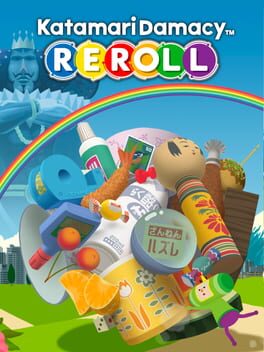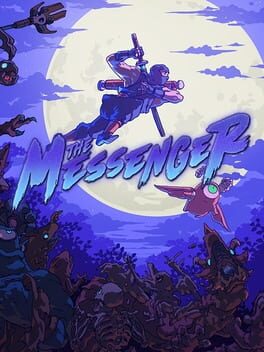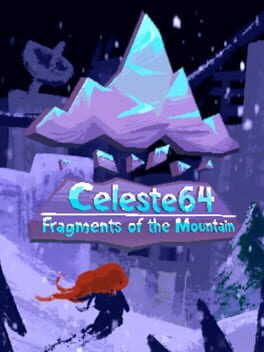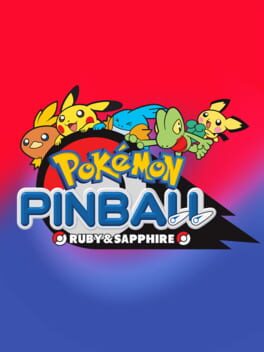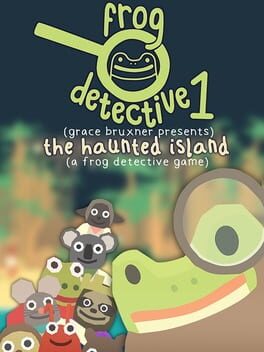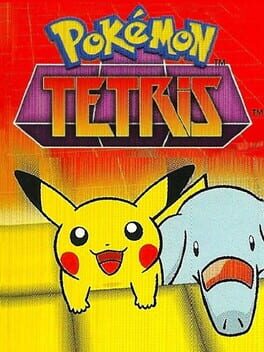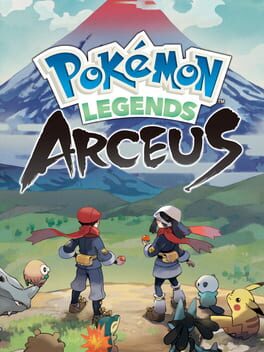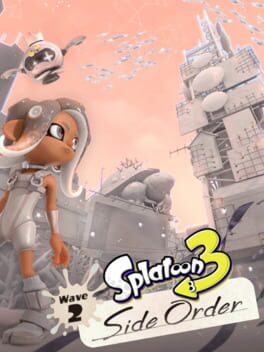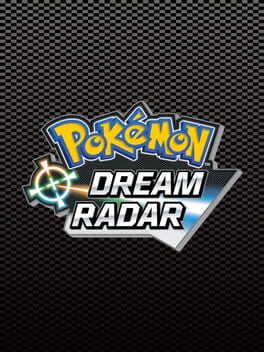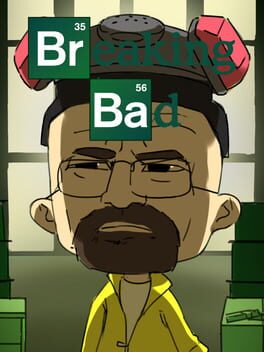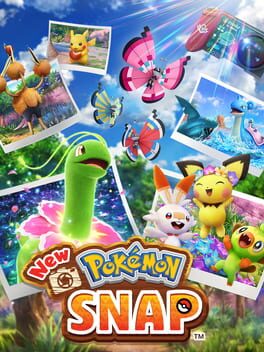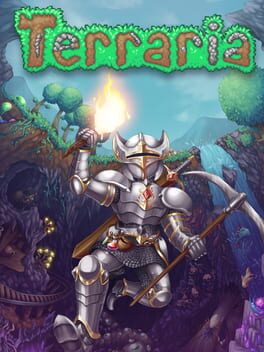Shaaaaaar
I had to learn to love Katamari Damacy, to be honest. It’s a fun game, but it absolutely has an adjustment period.
The controls are gonna make or break the game for someone, in my opinion. They’re… unique, unlike most games you’ll play. I didn’t like them at first, I couldn’t get the hang of them, but I grew adjusted eventually and found them fun. Never got the hang of the dash-esque move though, it felt too awkward to execute. The main game itself is fun, it’s really satisfying to build up your katamari and see both it and the variety of items that can be picked up expand.
The style of the game is charming. The graphics are cute, with a nostalgic and simple feeling to them. The music is iconic (though Lonely Rolling Star is still the best one to me and probably the only one I’d listen to on my own), and it genuinely does a lot to enhance the gameplay by building onto its pre-existing style.
Though honestly, it can get a little repetitive. There aren’t a lot of unique gimmicks, and even then not every level is a hit for me (Gemini, I didn’t like Gemini). The main formula works, and it's still fun, but I wish the game did a little more than it does now. And yeah, the controls are weird and take getting used to. I don’t think its entirely a bad thing, and they’re what makes Katamari Damacy what it is, but man do they feel clumsy at first (and to an extent they still do). That said, the game is still fun, and it's worth giving it a shot if you’re considering it.
The controls are gonna make or break the game for someone, in my opinion. They’re… unique, unlike most games you’ll play. I didn’t like them at first, I couldn’t get the hang of them, but I grew adjusted eventually and found them fun. Never got the hang of the dash-esque move though, it felt too awkward to execute. The main game itself is fun, it’s really satisfying to build up your katamari and see both it and the variety of items that can be picked up expand.
The style of the game is charming. The graphics are cute, with a nostalgic and simple feeling to them. The music is iconic (though Lonely Rolling Star is still the best one to me and probably the only one I’d listen to on my own), and it genuinely does a lot to enhance the gameplay by building onto its pre-existing style.
Though honestly, it can get a little repetitive. There aren’t a lot of unique gimmicks, and even then not every level is a hit for me (Gemini, I didn’t like Gemini). The main formula works, and it's still fun, but I wish the game did a little more than it does now. And yeah, the controls are weird and take getting used to. I don’t think its entirely a bad thing, and they’re what makes Katamari Damacy what it is, but man do they feel clumsy at first (and to an extent they still do). That said, the game is still fun, and it's worth giving it a shot if you’re considering it.
2018
The Messenger is cool. Playing around with the idea of the passage of time, The Messenger blends genres in a way that feels really novel and fun to play.
The main gameplay transitions from a platformer to a metroidvania. The first half focuses on platforming, learning the map and the layout of the world, while the second half is a metroidvania which uses your prior knowledge of the map layout to play around with exploration across time periods and making variations to the world you already knew. On paper, this is genius, and in many ways the execution is extremely cool. The only issue is that fast travel in The Messenger is extremely limited which can REALLY hold the game back at times, since the player will need to do a fair amount of long walks to backtrack to certain areas because there isn’t a way to quickly get there. That’s not to say the metroidvania aspects don’t work, because they absolutely do and the evolution from a platformer to a metroidvania is a brilliant way to tie in the idea of time shifts to the gameplay itself, but the gameplay is majorly held back due to being so restricted with fast travel.
The main way the metroidvania half plays with exploration is with portals that shift you between the past and the future. These are really cool and add a whole new dimension to exploration! Room layouts will sometimes change, either opening up new directions or closing off old ones, and they make for some really cool puzzles. It’ll usually be obvious if you need to be in a different time period for a puzzle or area, but being in the wrong time period for a certain point can be punishing, especially due to the limited fast travel system. The Messenger’s other mechanical additions, such as cloud-stepping and the hookshot (look, I don’t remember the actual term, but even the game admitted it’ll probably be called the hookshot by people) are REALLY fun and lead to really fun movement.
The art style is a balance of an 8-bit style and a 16-bit style (as well as matching music) which alternates depending on the time period you’re currently in. Both of these styles are beautiful, using the strengths of each medium well. The 8-bit style has a retro and almost nostalgic feeling (especially once reaching the second half of the game), while the 16-bit style feels stunning after transitioning to being in it. The setting itself will also visually change as time passes, showing that the world itself is developing and changing across time, not just the visual style. The writing is also genuinely hilarious, having a meta sense of humor that isn’t afraid to poke fun at itself and at the player.
If you like platformers or metroidvanias, The Messenger is a great time that brings something unique and novel to the table. While definitely flawed, The Messenger is a really enjoyable game that brings a really unique experience.
The main gameplay transitions from a platformer to a metroidvania. The first half focuses on platforming, learning the map and the layout of the world, while the second half is a metroidvania which uses your prior knowledge of the map layout to play around with exploration across time periods and making variations to the world you already knew. On paper, this is genius, and in many ways the execution is extremely cool. The only issue is that fast travel in The Messenger is extremely limited which can REALLY hold the game back at times, since the player will need to do a fair amount of long walks to backtrack to certain areas because there isn’t a way to quickly get there. That’s not to say the metroidvania aspects don’t work, because they absolutely do and the evolution from a platformer to a metroidvania is a brilliant way to tie in the idea of time shifts to the gameplay itself, but the gameplay is majorly held back due to being so restricted with fast travel.
The main way the metroidvania half plays with exploration is with portals that shift you between the past and the future. These are really cool and add a whole new dimension to exploration! Room layouts will sometimes change, either opening up new directions or closing off old ones, and they make for some really cool puzzles. It’ll usually be obvious if you need to be in a different time period for a puzzle or area, but being in the wrong time period for a certain point can be punishing, especially due to the limited fast travel system. The Messenger’s other mechanical additions, such as cloud-stepping and the hookshot (look, I don’t remember the actual term, but even the game admitted it’ll probably be called the hookshot by people) are REALLY fun and lead to really fun movement.
The art style is a balance of an 8-bit style and a 16-bit style (as well as matching music) which alternates depending on the time period you’re currently in. Both of these styles are beautiful, using the strengths of each medium well. The 8-bit style has a retro and almost nostalgic feeling (especially once reaching the second half of the game), while the 16-bit style feels stunning after transitioning to being in it. The setting itself will also visually change as time passes, showing that the world itself is developing and changing across time, not just the visual style. The writing is also genuinely hilarious, having a meta sense of humor that isn’t afraid to poke fun at itself and at the player.
If you like platformers or metroidvanias, The Messenger is a great time that brings something unique and novel to the table. While definitely flawed, The Messenger is a really enjoyable game that brings a really unique experience.
Now, I’m no pinball expert or anything, in fact I’m pretty bad at pinball, but Pokemon transfers shockingly well into a pinball game. I kinda see why there’s three Pokemon Pinball games (the Pokemon Mini had a rendition of Pokemon Pinball), the formula genuinely works.
Pokemon Pinball’s mechanics are easy to figure out, so it's easy to get into if you’re not familiar with pinball (I wish mechanics were explained in-game, but that’s a trend I’ve noticed with pinball games anyway). Pokedex completion feels genuinely achievable as well, with the RNG components being a little more controllable by the player (which feels like a godsend after playing Pokemon Shock Tetris). You can control what pool of encounters you can find, you can control if you want to catch, evolve, or hatch a Pokemon, and if you’re struggling to find a certain Pokemon you can trigger the mode to catch/hatch/evolve another Pokemon so long as you can aim your shots. And the sprites in this game are really adorable and dynamic (albeit slightly awkward at times, the immediate examples I think of are Zubat being colored incorrectly and Plusle’s pose just looking off for some reason).
I think the maps are… fine? Again, I’m no pinball expert, and I’m pretty bad at it, but the maps don’t feel incredible or anything. Ruby’s bumper mechanic is so genuinely annoying, and Sapphire’s shop is INCREDIBLY awkward to reach (the shop buttons are so small, it sucks). The Kecleon minigame isn’t really my thing, the Spheal minigame is just annoying with how you can accidentally trigger it and get stuck doing it when you don’t want to, and Dusclops... Dusclops is easy but fine enough. Groudon I also like because it feels like there’s ways to get around its attacks, but Kyogre is annoying, especially due to there not being any counterplay to Sheer Cold (I never got to Rayquaza’s minigame).
I don’t personally think Pokemon Pinball is anything special, but I think it’s fun. It’s worth trying out if you’re a Pokemon fan or a pinball fan.
Pokemon Pinball’s mechanics are easy to figure out, so it's easy to get into if you’re not familiar with pinball (I wish mechanics were explained in-game, but that’s a trend I’ve noticed with pinball games anyway). Pokedex completion feels genuinely achievable as well, with the RNG components being a little more controllable by the player (which feels like a godsend after playing Pokemon Shock Tetris). You can control what pool of encounters you can find, you can control if you want to catch, evolve, or hatch a Pokemon, and if you’re struggling to find a certain Pokemon you can trigger the mode to catch/hatch/evolve another Pokemon so long as you can aim your shots. And the sprites in this game are really adorable and dynamic (albeit slightly awkward at times, the immediate examples I think of are Zubat being colored incorrectly and Plusle’s pose just looking off for some reason).
I think the maps are… fine? Again, I’m no pinball expert, and I’m pretty bad at it, but the maps don’t feel incredible or anything. Ruby’s bumper mechanic is so genuinely annoying, and Sapphire’s shop is INCREDIBLY awkward to reach (the shop buttons are so small, it sucks). The Kecleon minigame isn’t really my thing, the Spheal minigame is just annoying with how you can accidentally trigger it and get stuck doing it when you don’t want to, and Dusclops... Dusclops is easy but fine enough. Groudon I also like because it feels like there’s ways to get around its attacks, but Kyogre is annoying, especially due to there not being any counterplay to Sheer Cold (I never got to Rayquaza’s minigame).
I don’t personally think Pokemon Pinball is anything special, but I think it’s fun. It’s worth trying out if you’re a Pokemon fan or a pinball fan.
2002
For the record, there’s a lot I can’t judge about Pokemon Tetris. I played a Japanese version of the game, so I already had to reference wikis and outside sources to learn about the game due to not being able to read Japanese. If this game poorly explains its mechanics, has misleading text, or there’s flaws surrounding the text and language of the game, I have no idea about it. Also I call it Shock Tetris in this because Pokemon Shock Tetris is its name in Japanese and I think its a cool name.
At its core, Shock Tetris is just, well, Tetris. Simplify this game to its base mechanics, and you just have classic Tetris. While it does deviate from classic Tetris in some ways, you can guess exactly what you’re signing up for when playing it. The focus of its gameplay isn’t about score or speed like most Tetris games, but instead on line clears. Shock Tetris’s main mechanic is that when playing Tetris, a silhouette of a Pokemon will appear on the side of the screen. Getting a 4-line clear (or a 5-line but we’ll get to that) will catch the Pokemon, adding it to your Pokedex. As a result, Shock Tetris mainly cares about getting perfect line clears. While catching Pokemon is an RNG hell, I do honestly think the mechanic is charming. Catching a new Pokemon is fun, and the enlarged sprites are cute.
Something else that makes Shock Tetris stand out is that it’s one of very few Tetris games with pentominoes, or 5-block pieces. Pentominoes add an extra layer of difficulty for those not familiar with playing with them (me) in that you need to learn how to fit them into your board without leaving gaps, since gameplay requires you to go for 4 and 5-line clears to catch Pokemon. Pentominoes are an interesting gameplay aspect, even if they’re kind of hellish to learn.
But pentominoes are extremely important to gameplay because of how they interact with encounters. Completing a 5-line clear will guarantee a new Pokemon encounter (if one is able to spawn), which makes them basically required to complete the Pokedex due to being able to force rare encounters and curb the RNG of running into duplicates. But there’s also RNG involved in this as well, since rarer Pokemon will despawn faster than more common Pokemon, which can mean even if you get a 5-line clear and force a rarer Pokemon, you still may not be able to get it because you couldn’t get the pieces you need in time. And considering that you also will be running into other pentominoes at the stages where you can do this, there’s extra difficulty in trying to set everything up without gaps. RNG is a major gatekeeper for completion of this game, and that can be pretty frustrating.
But the biggest issue Shock Tetris has is that the game is very technically limited. The Pokemon Mini is a really weak system that absolutely limited what Shock Tetris could do. Shock Tetris is lacking various QoL features like having a ghost piece or a hold system (hold was introduced to Tetris games before Shock Tetris released), with the hold mechanic especially being dearly missed due to how catching mechanics work; dex completion would be so much less frustrating if the player could hold a line piece to time when they can catch a new encounter. And while mimicking classic Tetris isn’t a bad thing, not only does Shock Tetris’s inclusion of pentominoes sort of throw off it recreating classic Tetris, but the features missing would have majorly improved gameplay and removed a lot of frustration. Pair this with the Mini’s graphical limitations (and music, because honestly Shock Tetris’s theme got pretty grating and hard on my ears) and Shock Tetris’s technical limits become obvious.
Shock Tetris is stuck in a terrible middleground of having a lot of interesting mechanics (pentominoes and its catching mechanics) that are limited by the system it released on, and being so obscure that it hardly receives any love and is highly unlikely to ever be remade. The Pokemon Mini was limited in where you could get it (Pokemon Center or via online shops) and only ever had 10 games, with 5 of them being Japan exclusive. As well, Shock Tetris never released in North America, obscuring its existence even further. I mention this because Shock Tetris never really got a chance to succeed, and since it's so obscure the game will likely never be revisited or remade. Shock Tetris is nothing short of wasted potential, and it stings a lot because the game is genuinely really cool despite all of its challenges. I just wish Shock Tetris got dealt a better hand than it did.
At its core, Shock Tetris is just, well, Tetris. Simplify this game to its base mechanics, and you just have classic Tetris. While it does deviate from classic Tetris in some ways, you can guess exactly what you’re signing up for when playing it. The focus of its gameplay isn’t about score or speed like most Tetris games, but instead on line clears. Shock Tetris’s main mechanic is that when playing Tetris, a silhouette of a Pokemon will appear on the side of the screen. Getting a 4-line clear (or a 5-line but we’ll get to that) will catch the Pokemon, adding it to your Pokedex. As a result, Shock Tetris mainly cares about getting perfect line clears. While catching Pokemon is an RNG hell, I do honestly think the mechanic is charming. Catching a new Pokemon is fun, and the enlarged sprites are cute.
Something else that makes Shock Tetris stand out is that it’s one of very few Tetris games with pentominoes, or 5-block pieces. Pentominoes add an extra layer of difficulty for those not familiar with playing with them (me) in that you need to learn how to fit them into your board without leaving gaps, since gameplay requires you to go for 4 and 5-line clears to catch Pokemon. Pentominoes are an interesting gameplay aspect, even if they’re kind of hellish to learn.
But pentominoes are extremely important to gameplay because of how they interact with encounters. Completing a 5-line clear will guarantee a new Pokemon encounter (if one is able to spawn), which makes them basically required to complete the Pokedex due to being able to force rare encounters and curb the RNG of running into duplicates. But there’s also RNG involved in this as well, since rarer Pokemon will despawn faster than more common Pokemon, which can mean even if you get a 5-line clear and force a rarer Pokemon, you still may not be able to get it because you couldn’t get the pieces you need in time. And considering that you also will be running into other pentominoes at the stages where you can do this, there’s extra difficulty in trying to set everything up without gaps. RNG is a major gatekeeper for completion of this game, and that can be pretty frustrating.
But the biggest issue Shock Tetris has is that the game is very technically limited. The Pokemon Mini is a really weak system that absolutely limited what Shock Tetris could do. Shock Tetris is lacking various QoL features like having a ghost piece or a hold system (hold was introduced to Tetris games before Shock Tetris released), with the hold mechanic especially being dearly missed due to how catching mechanics work; dex completion would be so much less frustrating if the player could hold a line piece to time when they can catch a new encounter. And while mimicking classic Tetris isn’t a bad thing, not only does Shock Tetris’s inclusion of pentominoes sort of throw off it recreating classic Tetris, but the features missing would have majorly improved gameplay and removed a lot of frustration. Pair this with the Mini’s graphical limitations (and music, because honestly Shock Tetris’s theme got pretty grating and hard on my ears) and Shock Tetris’s technical limits become obvious.
Shock Tetris is stuck in a terrible middleground of having a lot of interesting mechanics (pentominoes and its catching mechanics) that are limited by the system it released on, and being so obscure that it hardly receives any love and is highly unlikely to ever be remade. The Pokemon Mini was limited in where you could get it (Pokemon Center or via online shops) and only ever had 10 games, with 5 of them being Japan exclusive. As well, Shock Tetris never released in North America, obscuring its existence even further. I mention this because Shock Tetris never really got a chance to succeed, and since it's so obscure the game will likely never be revisited or remade. Shock Tetris is nothing short of wasted potential, and it stings a lot because the game is genuinely really cool despite all of its challenges. I just wish Shock Tetris got dealt a better hand than it did.
Pokemon Legends Arceus is exactly the game that Pokemon needed to make. An open world game is exactly the big step that Pokemon needed to take as a franchise, and PLA does a fantastic job opening the door to open world games. Its gameplay, while definitely having a lot of room to improve, is cleverly designed to lean into its open world and exploratory elements, which leads to a fresh, fun, and memorable gameplay experience.
Each of the five areas of the game are big, giving the player a lot to do and a lot to explore. The game also does a great job guiding and encouraging the player to explore through the various missions given to the player, the Unown hunt showing off various landmarks (and usually the Unowns are also positioned in goofy ways, so bonus points for comedy), and Spiritomb wisps… they’re an exception in that they suck. They act as more easily visible Koroks from Breath of the Wild, except by more easily visible I mean mainly only at night. They’re not fun to look for, they’re just annoying especially with how many there are to find. But again, they’re an exception to the general trend of encouraging the player to explore in interesting and fun ways.
The story is also designed in a clever way to further encourage exploration, with story segments being very short while simultaneously guiding the player across a large portion of the map. Most areas purposefully require the player to complete objectives all across the map in order to complete the story, which helps to encourage players to branch off of the beaten path when, while moving around the map, a landmark or Pokemon catches their eye. Even if you never do a sidequest, you’ll still be visiting a large amount of the game. Yet the player isn’t brought everywhere by the story, giving room to find things on your own. And with each story segment being pretty short, it’s rare that the game feels bogged down by cutscenes or dialogue.
PLA’s handling of the Pokedex is probably the most unique aspect of the game, where completing a dex entry requires more than just catching the Pokemon once. But through its various missions, the Pokedex teaches players how to use and make the most out of PLA’s mechanics. Whether its how to use food or stunning items to make a Pokemon easier to catch, how to be stealthy and use your environment to your advantage, or even something like a Pokemon’s weaknesses, the Pokedex helps build mastery of PLA’s various mechanics. But you also have the freedom to not do certain quests, not forcing players to play PLA in one specific way.
But while I think the Pokedex is well-designed, god the dex can be grindy. I found working on complete dex entries to be pretty fun, but it also often felt like an overwhelming gauntlet to get through. Some Pokemon, especially pre-evolved Pokemon (and ESPECIALLY baby Pokemon) rely primarily on catching and evolving them, or feeding them before you catch them. Many of the Pokemon who have very few missions for after you catch them also happen to be some of the rarer Pokemon, too, making dex entries like Munchlax really annoying to complete. Fortunately, completing dex entries doesn’t usually take very much time, so progress can feel snappy and satisfying when you complete a lot of it at bulk.
Despite how good a lot of its design choices are, PLA’s mechanics can feel pretty primitive at times. The main example is the controls, especially on mounts. I can’t describe why, but PLA’s controls don’t feel great. The button layout doesn’t feel very good to me (and when you’re not on a mount, while you can run there seems to be a stamina mechanic? Except you never can see a stamina bar or anything, so it’s really unclear how sprinting works). This is worst on mounts, especially Basculegion and Braviary. On both mounts it’s hard to have precise movement, Basculegion feeling very clunky when jumping while Braviary has really annoying camera controls when dashing as well as diving being at such a bad angle that it’s hard to land where you want. The other mounts also have their own problems as well (Ursaluna is pretty useless outside of two evolution items, Sneasler is extremely slow and the game’s ledges are designed in a way which makes Sneasler hop off and stand on a ledge a ton, and Wyrdeer is a Skyrim horse (which I see as a win)). Also, I wish you could throw Pokemon or items when on mounts (notably Wyrdeer), because it’s such a good feature that you can do that and it’s extremely annoying that they don't let you on mounts. You can on Basculegion, but using items feels so awkward on Basculegion that it’s uncomfortable to use them.
Despite being rough around the edges, PLA’s design at its core is pretty genius with all of its design choices being made to both highlight and expand upon the game’s strengths, being the open world. It’s one of the best modern Pokemon games for that reason, and was a game that the Pokemon franchise truly needed (both because it’s a genuinely good game and because open world was a huge step for Pokemon). Much of the groundwork PLA set would be carried over and improved upon in Scarlet and Violet (despite the uh… infamous state of those games), and upon a revisit it’s pretty obvious that there’s a lot of room for improvement. But PLA is a genuinely fantastic game on its own, and is one of the best games that have come out of the series as a whole.
Each of the five areas of the game are big, giving the player a lot to do and a lot to explore. The game also does a great job guiding and encouraging the player to explore through the various missions given to the player, the Unown hunt showing off various landmarks (and usually the Unowns are also positioned in goofy ways, so bonus points for comedy), and Spiritomb wisps… they’re an exception in that they suck. They act as more easily visible Koroks from Breath of the Wild, except by more easily visible I mean mainly only at night. They’re not fun to look for, they’re just annoying especially with how many there are to find. But again, they’re an exception to the general trend of encouraging the player to explore in interesting and fun ways.
The story is also designed in a clever way to further encourage exploration, with story segments being very short while simultaneously guiding the player across a large portion of the map. Most areas purposefully require the player to complete objectives all across the map in order to complete the story, which helps to encourage players to branch off of the beaten path when, while moving around the map, a landmark or Pokemon catches their eye. Even if you never do a sidequest, you’ll still be visiting a large amount of the game. Yet the player isn’t brought everywhere by the story, giving room to find things on your own. And with each story segment being pretty short, it’s rare that the game feels bogged down by cutscenes or dialogue.
PLA’s handling of the Pokedex is probably the most unique aspect of the game, where completing a dex entry requires more than just catching the Pokemon once. But through its various missions, the Pokedex teaches players how to use and make the most out of PLA’s mechanics. Whether its how to use food or stunning items to make a Pokemon easier to catch, how to be stealthy and use your environment to your advantage, or even something like a Pokemon’s weaknesses, the Pokedex helps build mastery of PLA’s various mechanics. But you also have the freedom to not do certain quests, not forcing players to play PLA in one specific way.
But while I think the Pokedex is well-designed, god the dex can be grindy. I found working on complete dex entries to be pretty fun, but it also often felt like an overwhelming gauntlet to get through. Some Pokemon, especially pre-evolved Pokemon (and ESPECIALLY baby Pokemon) rely primarily on catching and evolving them, or feeding them before you catch them. Many of the Pokemon who have very few missions for after you catch them also happen to be some of the rarer Pokemon, too, making dex entries like Munchlax really annoying to complete. Fortunately, completing dex entries doesn’t usually take very much time, so progress can feel snappy and satisfying when you complete a lot of it at bulk.
Despite how good a lot of its design choices are, PLA’s mechanics can feel pretty primitive at times. The main example is the controls, especially on mounts. I can’t describe why, but PLA’s controls don’t feel great. The button layout doesn’t feel very good to me (and when you’re not on a mount, while you can run there seems to be a stamina mechanic? Except you never can see a stamina bar or anything, so it’s really unclear how sprinting works). This is worst on mounts, especially Basculegion and Braviary. On both mounts it’s hard to have precise movement, Basculegion feeling very clunky when jumping while Braviary has really annoying camera controls when dashing as well as diving being at such a bad angle that it’s hard to land where you want. The other mounts also have their own problems as well (Ursaluna is pretty useless outside of two evolution items, Sneasler is extremely slow and the game’s ledges are designed in a way which makes Sneasler hop off and stand on a ledge a ton, and Wyrdeer is a Skyrim horse (which I see as a win)). Also, I wish you could throw Pokemon or items when on mounts (notably Wyrdeer), because it’s such a good feature that you can do that and it’s extremely annoying that they don't let you on mounts. You can on Basculegion, but using items feels so awkward on Basculegion that it’s uncomfortable to use them.
Despite being rough around the edges, PLA’s design at its core is pretty genius with all of its design choices being made to both highlight and expand upon the game’s strengths, being the open world. It’s one of the best modern Pokemon games for that reason, and was a game that the Pokemon franchise truly needed (both because it’s a genuinely good game and because open world was a huge step for Pokemon). Much of the groundwork PLA set would be carried over and improved upon in Scarlet and Violet (despite the uh… infamous state of those games), and upon a revisit it’s pretty obvious that there’s a lot of room for improvement. But PLA is a genuinely fantastic game on its own, and is one of the best games that have come out of the series as a whole.
2015
This review contains spoilers
Undertale is an interesting case of a game with decent gameplay being something stellar because of its writing, music, and attention to detail.
Regular enemy fights are fine. They’re nothing special, nothing revolutionary, just fine. The ACT menu is a fun twist on encounters, making them more like a puzzle where, if you pay attention to their dialogue, you can figure out how to spare each enemy. Though there’s also a clunkiness to encounters, especially when there’s multiple enemies; fights can feel like a slog to get through.
Bosses are the exception, most of them being interesting encounters that play with the game’s mechanics in an interesting way. The actual patterns of each boss are solid and almost all do something interesting (sole exception for me being Toriel, which to be fair is intentional). Though I feel like the ACT menu was very underutilized for bosses. The ACT menu can have effects and often build on the character of the boss themselves, the example that stands out to me most being Muffet letting you pay to weaken her attacks, but the only bosses that use the ACT menu are Mettaton and Asriel, the latter of which being hard to compare to other bosses due to Asriel essentially being a cutscene. And it’s a shame, because the use of the ACT button when it WOULD be used was always really fun!
But battles feel more like an accent to Undertale, the main draw being the game’s characters and storytelling. Straight up, if you don’t like Undertale’s cast, you’re not going to like Undertale. The game’s central focus is on its characters, after all a major point of the game is that you don’t have to kill monsters (and that it's better if you don’t). Undertale’s characters are the most important aspect of the game, and my god they are written well.
There is something to love about every character, some reason to want to be their friend and help them out. The random monsters in the overworld often have something interesting or funny to say, and even regular enemies in fights are charming and have personality to them. The Underground is vibrant with life, which really encourages the player to care about monsterkind. And the main cast? They all have a certain level of complexity to them, whether it’s explicitly shown or something you need to find yourself. Basically every main character has nuanced writing that can resonate with players. When Undertale exploded in popularity, it wasn’t for its gameplay or visuals, but for its characters. There’s a reason why so many people have made AUs of Undertale characters, because the cast is what makes Undertale special. Pair a great cast with a genuinely funny game filled with charm, goofiness, and heart, and it becomes evident that Undertale’s writing is something special.
And you can’t mention Undertale without mentioning its music. While Toby Fox has definitely improved in his music, Undertale’s soundtrack is spectacular. Waterfall, Another Medium, and CORE are spectacular overworld themes; Hopes and Dreams, Death by Glamour, Finale, and of course Megalovania are spectacular boss themes, and Undertale makes me feel genuinely emotional everytime I listen to it. And this is only my personal favorites, so many of the songs in Undertale are fantastic and iconic.
Undertale is a masterpiece to so many people because of how impactful its writing is. The game had a major impact on both indie gaming and gaming in general, and having made a major impact on culture in general. Whether you’ve played Undertale or not, you’ve heard Undertale’s soundtrack, you know who Sans is, you’ve interacted with some kind of media that has been influenced by Undertale. If Undertale had better combat, it’d be an easy 5/5 for me. Undertale is well deserving of the love and praise it receives, it’s truly something spectacular.
Regular enemy fights are fine. They’re nothing special, nothing revolutionary, just fine. The ACT menu is a fun twist on encounters, making them more like a puzzle where, if you pay attention to their dialogue, you can figure out how to spare each enemy. Though there’s also a clunkiness to encounters, especially when there’s multiple enemies; fights can feel like a slog to get through.
Bosses are the exception, most of them being interesting encounters that play with the game’s mechanics in an interesting way. The actual patterns of each boss are solid and almost all do something interesting (sole exception for me being Toriel, which to be fair is intentional). Though I feel like the ACT menu was very underutilized for bosses. The ACT menu can have effects and often build on the character of the boss themselves, the example that stands out to me most being Muffet letting you pay to weaken her attacks, but the only bosses that use the ACT menu are Mettaton and Asriel, the latter of which being hard to compare to other bosses due to Asriel essentially being a cutscene. And it’s a shame, because the use of the ACT button when it WOULD be used was always really fun!
But battles feel more like an accent to Undertale, the main draw being the game’s characters and storytelling. Straight up, if you don’t like Undertale’s cast, you’re not going to like Undertale. The game’s central focus is on its characters, after all a major point of the game is that you don’t have to kill monsters (and that it's better if you don’t). Undertale’s characters are the most important aspect of the game, and my god they are written well.
There is something to love about every character, some reason to want to be their friend and help them out. The random monsters in the overworld often have something interesting or funny to say, and even regular enemies in fights are charming and have personality to them. The Underground is vibrant with life, which really encourages the player to care about monsterkind. And the main cast? They all have a certain level of complexity to them, whether it’s explicitly shown or something you need to find yourself. Basically every main character has nuanced writing that can resonate with players. When Undertale exploded in popularity, it wasn’t for its gameplay or visuals, but for its characters. There’s a reason why so many people have made AUs of Undertale characters, because the cast is what makes Undertale special. Pair a great cast with a genuinely funny game filled with charm, goofiness, and heart, and it becomes evident that Undertale’s writing is something special.
And you can’t mention Undertale without mentioning its music. While Toby Fox has definitely improved in his music, Undertale’s soundtrack is spectacular. Waterfall, Another Medium, and CORE are spectacular overworld themes; Hopes and Dreams, Death by Glamour, Finale, and of course Megalovania are spectacular boss themes, and Undertale makes me feel genuinely emotional everytime I listen to it. And this is only my personal favorites, so many of the songs in Undertale are fantastic and iconic.
Undertale is a masterpiece to so many people because of how impactful its writing is. The game had a major impact on both indie gaming and gaming in general, and having made a major impact on culture in general. Whether you’ve played Undertale or not, you’ve heard Undertale’s soundtrack, you know who Sans is, you’ve interacted with some kind of media that has been influenced by Undertale. If Undertale had better combat, it’d be an easy 5/5 for me. Undertale is well deserving of the love and praise it receives, it’s truly something spectacular.
(Shelved mostly because I have one more thing to do that I'm putting on the back-burner for now)
Remember how insane Octo Expansion was for how it changed the formula of singleplayer in a refreshing, interesting, and fun way? Side Order gives me so many memories of what Octo Expansion felt like when I played it for the first time. It remixes the formula of Splatoon singleplayer in a really interesting and (relative to Splatoon’s IP) innovative way for the franchise.
I’m genuinely shocked how well Splatoon translates into a roguelite. Gameplay feels natural and snappy, and while of course there’s a big luck aspect to Side Order, the game rarely feels unfair. Honestly I can’t tell if it’s my skill or a flaw of the game, but Side Order could feel pretty easy at times with how much you’re given to work with. But even when the game would feel easy, it was so fun to PLAY. Side Order takes great advantage of the mechanics of Splatoon as well as remixing the gear building aspects of base game in an interesting way.
The story and characterization of Pearl, Marina, Acht and even Agent 8 is heartwarming and well-done. Octo Expansion and the story and worldbuilding from it are referenced a lot, which makes the absurd virtual world of Side Order feel surprisingly grounded. Side Order is also filled with the same charm that permeates all of Splatoon, taking itself seriously without being afraid to let characters (well, Pearl) be goofy.
Side Order hits, and it does what it aims to do very well. While certainly not my favorite roguelite, Side Order turns a game I love in Splatoon into something different and fresh, yet just as fun, if not more fun, than past singleplayer campaigns. Highly recommend if you enjoy base Splatoon to try out the DLC.
Remember how insane Octo Expansion was for how it changed the formula of singleplayer in a refreshing, interesting, and fun way? Side Order gives me so many memories of what Octo Expansion felt like when I played it for the first time. It remixes the formula of Splatoon singleplayer in a really interesting and (relative to Splatoon’s IP) innovative way for the franchise.
I’m genuinely shocked how well Splatoon translates into a roguelite. Gameplay feels natural and snappy, and while of course there’s a big luck aspect to Side Order, the game rarely feels unfair. Honestly I can’t tell if it’s my skill or a flaw of the game, but Side Order could feel pretty easy at times with how much you’re given to work with. But even when the game would feel easy, it was so fun to PLAY. Side Order takes great advantage of the mechanics of Splatoon as well as remixing the gear building aspects of base game in an interesting way.
The story and characterization of Pearl, Marina, Acht and even Agent 8 is heartwarming and well-done. Octo Expansion and the story and worldbuilding from it are referenced a lot, which makes the absurd virtual world of Side Order feel surprisingly grounded. Side Order is also filled with the same charm that permeates all of Splatoon, taking itself seriously without being afraid to let characters (well, Pearl) be goofy.
Side Order hits, and it does what it aims to do very well. While certainly not my favorite roguelite, Side Order turns a game I love in Splatoon into something different and fresh, yet just as fun, if not more fun, than past singleplayer campaigns. Highly recommend if you enjoy base Splatoon to try out the DLC.
2012
…Huh, Dream Radar is on Backloggd.
Yeah, Dream Radar is certainly A Thing. To give it some credit, Dream Radar does open some very interesting options for team members, considering hidden ability Pokemon come from here. Literally only went through it to use a Staryu early on my team. And the legendaries are cool, especially since you can get them at level 5. Using a Multiscale Lugia for a playthrough is technically viable and that’s really funny.
But like, Dream Radar is just annoying and grindy, even a bit frustrating at times. Like, apparently there’s a mechanic where the Pokemon you can find depends on the ORB COLOR YOU COLLECTED MOST THE RUN BEFORE. The game doesn’t tell you this. Orbs are annoying to collect, being a long grind to get a sizeable amount for upgrades and specific radar extenskons. Specific Pokemon are hard to find, with encounters being slow and limited even with the extension that increases Pokemon. Dream Radar is generally just a really annoying grind in order to get anything from it, something that’s just kinda… tolerable.
Worth it for my early Staryu though
Yeah, Dream Radar is certainly A Thing. To give it some credit, Dream Radar does open some very interesting options for team members, considering hidden ability Pokemon come from here. Literally only went through it to use a Staryu early on my team. And the legendaries are cool, especially since you can get them at level 5. Using a Multiscale Lugia for a playthrough is technically viable and that’s really funny.
But like, Dream Radar is just annoying and grindy, even a bit frustrating at times. Like, apparently there’s a mechanic where the Pokemon you can find depends on the ORB COLOR YOU COLLECTED MOST THE RUN BEFORE. The game doesn’t tell you this. Orbs are annoying to collect, being a long grind to get a sizeable amount for upgrades and specific radar extenskons. Specific Pokemon are hard to find, with encounters being slow and limited even with the extension that increases Pokemon. Dream Radar is generally just a really annoying grind in order to get anything from it, something that’s just kinda… tolerable.
Worth it for my early Staryu though
2023
2017
If I were to describe Hollow Knight in one word, it would be ambition. From the roots of its development to its release and eventually culminating into Silksong, Hollow Knight is an ambitious labor of love that can be felt in every detail of the game.
The map of Hallownest is gigantic, but designed intelligently. Each room feels distinct enough, whether because of the room’s contents or being visually distinctive, where navigation feels natural and intuitive. Each area feels balanced with map layouts that rarely feel empty or lackluster, and there’s almost always something to be found in each direction you can take. Secrets can be found everywhere in the map, and while the rewards for your search can be anticlimactic at times, there’s an added intrigue to your adventure as you might stumble into a hidden area. Hollow Knight’s ability to have a massive map that feels extremely well-planned out, filled with secrets, and consistently manages to keep each room visually distinct is extremely impressive.
Combat is simple yet satisfying, with fights rarely feeling luck-based. The Knight’s toolkit is small (your nail (+ nail arts), spells, healing, and movement tools), which makes it easy to pick up the basics of combat mechanics. However, mastering Hollow Knight’s mechanics requires a lot of skill and game knowledge, leading to boss victories feeling triumphant and satisfying. Hell, many fights feel similar to a dance as you learn how to dodge attacks, further aiding in the fantastic feel of combat. The game’s charm system allows for customizability in how you play, with some charms even being designed to synergize with each other and give added benefits (such as defender’s crest and spore shroom improving the damage of spore shroom’s damage cloud). There’s not one strict way to play Hollow Knight, and that’s a fantastic quality to have.
Hollow Knight’s combat system shines the most when up against the game’s bosses. And there’s a lot, 39 to be specific. Most bosses have interesting mechanics that make them fun to fight, and the majority of the bosses that don’t are designed for the beginning of the game and are purposefully simplistic. And while bosses are difficult, they never feel insurmountable and it always feels like you have the tools to succeed. Being able to have so many bosses and have the majority be fun, challenging, and well-designed is a major fear.
Artistically, Hollow Knight is stunning. Hallownest is incredibly atmospheric, with a world that feels alive and inhabited while also selling the feeling of being a ruined kingdom. The use of color further accentuates the world’s setting, with most of Hallownest being cool colors (primarily blue, but featuring a lot of greens, purples, greys, and earthy yellow), with the Infection contrasting the natural Hallownest by being jarringly orange. The use of color allows for the Infection to pop as something foreign, dangerous, and hostile. Hollow Knight’s soundtrack is iconic, with exciting boss music and soothing overworld themes. The game’s music subtly assists in making the world much better to explore and boss fights more engaging to fight.
And on top of all of that, Hollow Knight is $15 USD with 4 free DLC. Hollow Knight goes above and beyond, especially with its price tag and small development team. And it takes genuine passion to make a game as thoroughly designed as Hollow Knight is.
There’s a lot to say and love with Hollow Knight, a lot more than I can say here. Hollow Knight has had a major impact in the gaming sphere, both for players and for game developers. And for good reason, because Hollow Knight manages to nail so many of its mechanics and design choices and offers players so many directions and places to explore and interact with.
Hollow Knight is my favorite game of all time. And it has truly earned that title. It is a phenomenal game in so many ways
The map of Hallownest is gigantic, but designed intelligently. Each room feels distinct enough, whether because of the room’s contents or being visually distinctive, where navigation feels natural and intuitive. Each area feels balanced with map layouts that rarely feel empty or lackluster, and there’s almost always something to be found in each direction you can take. Secrets can be found everywhere in the map, and while the rewards for your search can be anticlimactic at times, there’s an added intrigue to your adventure as you might stumble into a hidden area. Hollow Knight’s ability to have a massive map that feels extremely well-planned out, filled with secrets, and consistently manages to keep each room visually distinct is extremely impressive.
Combat is simple yet satisfying, with fights rarely feeling luck-based. The Knight’s toolkit is small (your nail (+ nail arts), spells, healing, and movement tools), which makes it easy to pick up the basics of combat mechanics. However, mastering Hollow Knight’s mechanics requires a lot of skill and game knowledge, leading to boss victories feeling triumphant and satisfying. Hell, many fights feel similar to a dance as you learn how to dodge attacks, further aiding in the fantastic feel of combat. The game’s charm system allows for customizability in how you play, with some charms even being designed to synergize with each other and give added benefits (such as defender’s crest and spore shroom improving the damage of spore shroom’s damage cloud). There’s not one strict way to play Hollow Knight, and that’s a fantastic quality to have.
Hollow Knight’s combat system shines the most when up against the game’s bosses. And there’s a lot, 39 to be specific. Most bosses have interesting mechanics that make them fun to fight, and the majority of the bosses that don’t are designed for the beginning of the game and are purposefully simplistic. And while bosses are difficult, they never feel insurmountable and it always feels like you have the tools to succeed. Being able to have so many bosses and have the majority be fun, challenging, and well-designed is a major fear.
Artistically, Hollow Knight is stunning. Hallownest is incredibly atmospheric, with a world that feels alive and inhabited while also selling the feeling of being a ruined kingdom. The use of color further accentuates the world’s setting, with most of Hallownest being cool colors (primarily blue, but featuring a lot of greens, purples, greys, and earthy yellow), with the Infection contrasting the natural Hallownest by being jarringly orange. The use of color allows for the Infection to pop as something foreign, dangerous, and hostile. Hollow Knight’s soundtrack is iconic, with exciting boss music and soothing overworld themes. The game’s music subtly assists in making the world much better to explore and boss fights more engaging to fight.
And on top of all of that, Hollow Knight is $15 USD with 4 free DLC. Hollow Knight goes above and beyond, especially with its price tag and small development team. And it takes genuine passion to make a game as thoroughly designed as Hollow Knight is.
There’s a lot to say and love with Hollow Knight, a lot more than I can say here. Hollow Knight has had a major impact in the gaming sphere, both for players and for game developers. And for good reason, because Hollow Knight manages to nail so many of its mechanics and design choices and offers players so many directions and places to explore and interact with.
Hollow Knight is my favorite game of all time. And it has truly earned that title. It is a phenomenal game in so many ways
2021
Actually goes pretty hard. Like, this is a genuinely really fun puzzle game, filled with so much charm and so many neat little interactions. And it’s honestly more fun than I expected.
I never played the original Snap, but I’ve heard a lot of praise for it. And I expected the remake to be good, but I was genuinely surprised by how much fun I had. And New Snap is GIANT, with a ton of areas to explore at different times of day and even POSTGAME areas! I didn’t expect the game to be as big as it ended up being.
The game is beautiful, which of course was the biggest thing Snap needed to get down. Getting to explore a new area was awe-inspiring and exciting because of how beautiful the game was. And getting increasingly better photos felt satisfying because the better your photos are, the more that the visuals of Snap are able to shine.
But Snap’s puzzles are also really fun. It’s really interesting getting to interact with the world like you do in Snap. From helping Pokemon out, to starting conflicts, to just getting to see some rare sights, Snap’s puzzles end up feeling satisfying to figure out. And not every puzzle or detail is a request, you can trigger special things to happen by being creative with how you interact with the world and it’s genuinely so cool.
That said, jesus CHRIST the requests could be cryptic. It felt like a third of the requests were incredibly vague nods to a certain area without giving any direction on how to actually solve the puzzle. These types of requests made the game genuinely frustrating at times, especially without looking things up. That, and the scoring/points system is really poorly explained, which can make getting good shots more difficult.
But like, I didn’t expect Snap to be as thorough, detailed, and content-rich as it is. That said, Snap could also be REALLY frustrating, enough thar it dampened the experience for me. But when it wasn’t frustrating me, Snap was GOOD. Fun timekiller, and I can see myself getting on it to complete the various things I still have left over to do from my run.
I never played the original Snap, but I’ve heard a lot of praise for it. And I expected the remake to be good, but I was genuinely surprised by how much fun I had. And New Snap is GIANT, with a ton of areas to explore at different times of day and even POSTGAME areas! I didn’t expect the game to be as big as it ended up being.
The game is beautiful, which of course was the biggest thing Snap needed to get down. Getting to explore a new area was awe-inspiring and exciting because of how beautiful the game was. And getting increasingly better photos felt satisfying because the better your photos are, the more that the visuals of Snap are able to shine.
But Snap’s puzzles are also really fun. It’s really interesting getting to interact with the world like you do in Snap. From helping Pokemon out, to starting conflicts, to just getting to see some rare sights, Snap’s puzzles end up feeling satisfying to figure out. And not every puzzle or detail is a request, you can trigger special things to happen by being creative with how you interact with the world and it’s genuinely so cool.
That said, jesus CHRIST the requests could be cryptic. It felt like a third of the requests were incredibly vague nods to a certain area without giving any direction on how to actually solve the puzzle. These types of requests made the game genuinely frustrating at times, especially without looking things up. That, and the scoring/points system is really poorly explained, which can make getting good shots more difficult.
But like, I didn’t expect Snap to be as thorough, detailed, and content-rich as it is. That said, Snap could also be REALLY frustrating, enough thar it dampened the experience for me. But when it wasn’t frustrating me, Snap was GOOD. Fun timekiller, and I can see myself getting on it to complete the various things I still have left over to do from my run.
2011
A genuine masterpiece of a game.
Terraria has it all. Great combat, fun exploration, a lot of customizability, and so much to do. Terraria is massive in all departments, but not in a way that feels excessive or bloated. I don’t ever think to myself that there’s too many weapons or accessories, but instead that all the options allow for a lot of potential playstyles, even within the same weapon class. That variety also flows into Terraria having a TON of replay value. You can play melee in one run but then decide to play summoner in another run, and you’ll get two very different gameplay experiences. And Terraria’s gameplay as a whole leans a lot into being able to replay it, both because of the variety of ways you can play Terraria and because actually exploring a new Terraria world is engaging and interesting. Multiplayer Terraria is also a blast, especially since everyone can play different builds or focus on different aspects of the game.
Difficulty progression is smooth, never feeling too unmanageable. New bosses feel difficult but fair (the only exceptions being a small amount of bosses that are too easy, which is far less of a sin than too difficult in my eyes), and the bosses are just fun to fight in general. Combat feels great and well-balanced as a whole, even outside of bosses. Terraria feels really satisfying and clean to play.
Terraria’s biggest issue is that the game relies a lot on using a wiki. I don’t think the variety of items is a bad thing, but how to get items can either be convoluted (Zenith, Terraspark Boots, etc) or from rare drops (Rod of Discord, Slime Staff, etc). It can be daunting to enter Terraria without a guide, especially for things like class setups. And the low drop rate items as well, like Rod of Discord, can also result in Terraria being pretty grindy sometimes when just trying to get one item for an accessory or a weapon.
Terraria is a special game for me, and one of the games I will most highly recommend to people. It’s helped me through hard times and brought me closer to people I care about. I’m not a massive fan of sandbox games, but I’ve rarely ever clicked with a game as much as I clicked with Terraria. All the love and praise Terraria has earned across the years is beyond deserved, Terraria is incredible.
Terraria has it all. Great combat, fun exploration, a lot of customizability, and so much to do. Terraria is massive in all departments, but not in a way that feels excessive or bloated. I don’t ever think to myself that there’s too many weapons or accessories, but instead that all the options allow for a lot of potential playstyles, even within the same weapon class. That variety also flows into Terraria having a TON of replay value. You can play melee in one run but then decide to play summoner in another run, and you’ll get two very different gameplay experiences. And Terraria’s gameplay as a whole leans a lot into being able to replay it, both because of the variety of ways you can play Terraria and because actually exploring a new Terraria world is engaging and interesting. Multiplayer Terraria is also a blast, especially since everyone can play different builds or focus on different aspects of the game.
Difficulty progression is smooth, never feeling too unmanageable. New bosses feel difficult but fair (the only exceptions being a small amount of bosses that are too easy, which is far less of a sin than too difficult in my eyes), and the bosses are just fun to fight in general. Combat feels great and well-balanced as a whole, even outside of bosses. Terraria feels really satisfying and clean to play.
Terraria’s biggest issue is that the game relies a lot on using a wiki. I don’t think the variety of items is a bad thing, but how to get items can either be convoluted (Zenith, Terraspark Boots, etc) or from rare drops (Rod of Discord, Slime Staff, etc). It can be daunting to enter Terraria without a guide, especially for things like class setups. And the low drop rate items as well, like Rod of Discord, can also result in Terraria being pretty grindy sometimes when just trying to get one item for an accessory or a weapon.
Terraria is a special game for me, and one of the games I will most highly recommend to people. It’s helped me through hard times and brought me closer to people I care about. I’m not a massive fan of sandbox games, but I’ve rarely ever clicked with a game as much as I clicked with Terraria. All the love and praise Terraria has earned across the years is beyond deserved, Terraria is incredible.
